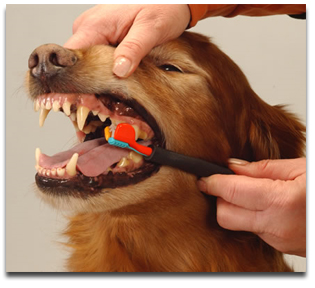
by: Jack Russell
Clean teeth and gums are very important of the overall health of your dog. Here are some information on the most common dental problems of dogs and ways in treating them.
Dog's common dental problems
- Periodontitis
It is very common among dogs to have gum disease. At the age of two or three, many dogs have either periodontitis or gingivitis.
The most common dental problem for canines is periodontitis, also known as periodontal disease. The disease is caused by various factors: plaque, food debris, cell mucus, and a mixture of bacteria. This results to a film characterized by milky-white on the dog's teeth as well as the gums. When this film gets combined with saliva, the plaque it causes becomes tartar, and very hard to remove.
- Gingivitis
Gingivitis, also known as gum disease, happens when gum tissue suffers from an inflammation. Without treatment, it can lead to periodontitis, teeth loosening, bone less, and ultimately, loss of teeth.
- Tooth fractures
Tooth fractures occur when dogs chew hard substances, such as hard rocks and cow hooves. The fractures result to infection inside the broken tooth, which is known as the endodontic disease.
How to prevent dental problems
Your dog can fight off these dental problems by removing the plaque before it actually develops as tartar. How to do it? The most effective way is by brushing the teeth of your dog in a mechanical fashion. The brushing would reduce much of the bacteria presence in the mouth, not to mention making your dog's breath smell sweeter. Make it a habit of brushing your teeth on a daily basis.
Toothpaste. There are toothpaste products made especially for dogs. Brush your pet's teeth using dog toothpaste. Human toothpaste is specifically designed for humans to spit the paste washings out. Dogs cannot do that, so pick a dog toothpaste that is safe enough for dogs to swallow.
Toothbrush. Using a toothbrush in its teeth would take some time for the dog to get used to. Let your dog be acquainted and get used to this is by putting some garlic salt, mix the salt with water, and dip the solution in an old toothbrush. Hold the old brush, and let your pet taste and chew it. Your dog will start to realize that chewing a toothbrush is and tastes good. Make it a habit a few times, until it feels comfortable brushing with it.
Finger brush. You could also use a finger brush instead of a toothbrush. A finger brush is a good alternative, although nothing could replace the good ol' toothbrush. The finger brush just fits onto one's fingertip and can let you brush the dog's teeth without the dog knowing it. Well, at least almost. The disadvantage of getting a finger brush to clean your dog's teeth is that its bristles are quite large for the brush to go under the gumline's margin as effectively compared with regular toothbrush.
Professional cleaning. If you don't want to do the cleaning by yourself, you could take your dog to a veterinarian and have its teeth professionally cleaned. A good veterinarian will take additional measures in ensuring your dog's clean teeth by anesthetizing your dog, scraping the buildup of plaque from all over the gumline areas, and polishing the teeth for a sparkling finish.
Home checkup. Try to make it a regular habit of checking the teeth of your dog for any cracked or broken teeth. If you see some problematic teeth, check promptly with the veterinarian.
Home safety. Of course, cleaning your dog's teeth does not mean you should disregard other areas of concern. Tough substances, such as bones, rocks, hard nylon, or cow hooves should be removed from areas where your dog could see. Buy your dog chewing toys that are safer like rubber-made toys. You could also provide bones that are soft enough for your dog to chew.
Mouthwash. There are some products in the market that deal very well in helping to kill the bacteria in your dog's mouth and could actually help heal damaged gum tissues. Do not forget to ask your veterinarian on the best products in the market.
Dental problems do not only happen to humans. Dogs also have dental issues as well. It is up to the owners on how to help their pet dogs overcome their dental problems.
This article was posted on December 06, 2005




